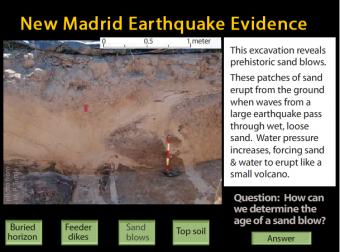
A sand blow is sand and water that come out onto the ground surface during an earthquake as a result of liquefaction. Also known as a "Sand boil."
Scroll over this photograph of an excavation to see evidence for prehistoric sand blows. Thise give evidence for earthquakes and liquefaction in the prehistoric record.
VIEW the interactive in a separate tab, by clicking on "Open Resource" then scroll over named features. (Note some browsers lack the plugins for rollovers.)
IRIS may be discontinuing these interactive animations in 2020. This file is an HTML5 file that uses a browser to view.
VIEW the interactive in a separate tab, by clicking on "Open Resource". (Note some browsers lack the plugins for rollovers.)
OR click Download All. AFTER downloading, you can Open either:
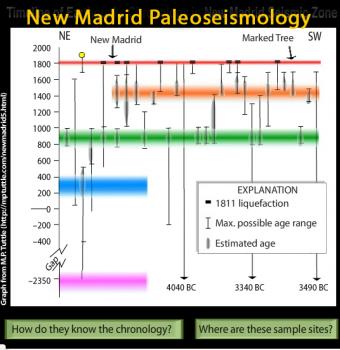
This interactive timeline shows that the 1811-12 earthquakes in New Madrid weren't the first.
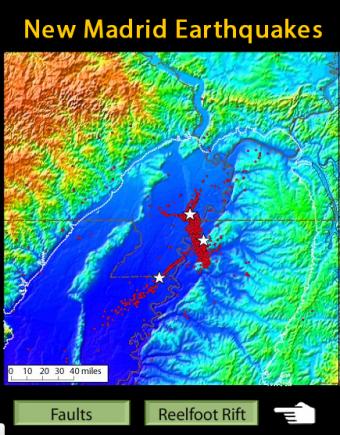
There are four major faults in and around the Reelfoot Rift related to earthquakes in the New Madrid area.
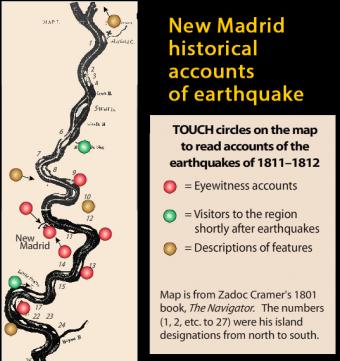
Many residents along the Mississippi experienced vigorous ground shaking and wrote about it in 1811 and 1812. Touch spots on map to read accounts of the devastation. For example, for spot #10, hover over the spot to watch an animation about how the river ran backwards (as witnessed by local residents.)
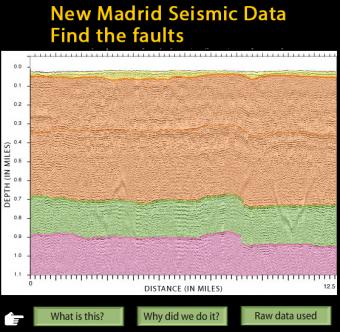
Raw seismic data gives us information about the ground beneath us. This interactive cross section shows faults beneath the New Madrid area.
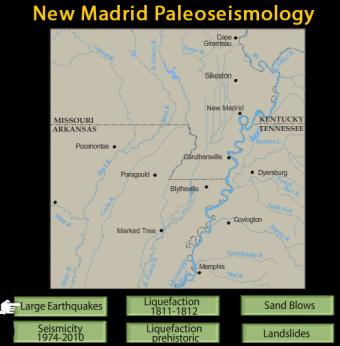
Learn about past large earthquakes, liquefaction, seismicity, sand blows, and landslides in this interactive map.
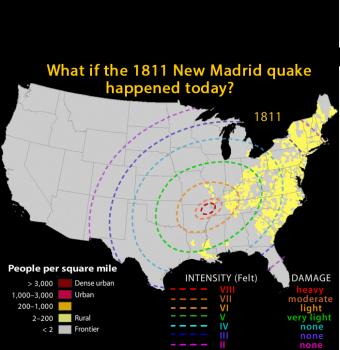
Scroll over the timeline from 1800 to 2010 to see the population of the United States grow to see what the impact of the 1811-1812 New Madrid earthquake would have today.
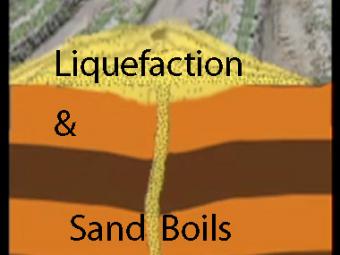
Sand Boil: sand-laden water can be ejected from a buried liquefied layer and erupt at the surface to form sand volcanoes; the surrounding ground often fractures and settles.
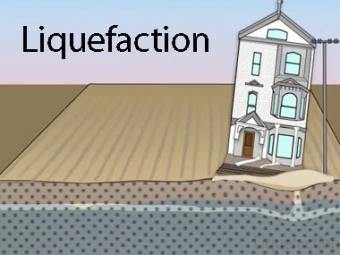
Liquefaction is a process by which water-saturated sediment temporarily loses strength and acts as a fluid. This effect can be caused by earthquake shaking.